- Home >
- Our Actions >
- Ambassador report
7
Comments
About Lake Kariba In Zambia. |
|---|
|
by Chabala Chisenga | 17-03-2017 07:13
|
|
Lake Kariba is the world's largest man-madelake and reservoir by volume. It lies 1300 kilometres upstream from the Indian Ocean, along the border between Zambia andZimbabwe. Lake Kariba was filled between 1958 and 1963 following the completion of the Kariba Dam at its northeastern end, flooding the Kariba Gorge on the Zambezi River.The Zimbabwean town of Kariba was built for construction workers on the lake's dam, while some other settlements such as Binga villageand Mlibizi in Zimbabwe and Siavonga andSinazongwe in Zambia have grown up to house people displaced by the rising waters. Lake Kariba is over 223 kilometres (140 mi) long and up to 40 kilometres (20 mi) in width. It covers an area of 5,580 square kilometres (2,150 sq mi) and its storage capacity is 185 cubic kilometres (44.4 cu mi). The mean depth of the lake is 29 metres (95 ft) the maximum depth is 97 metres (320 ft). It is the world's largest man-made reservoir, four times as large as the Three Gorges Dam.[1] The enormous mass of water (approximately 180,000,000,000,000 kilograms, or 180 petagrams [200 billion tons]) is believed to have caused induced seismicity in the seismically active region, including over 20earthquakes of greater than 5 magnitude on the Richter scale.[2]The lake has several islands, including Maaze Island, Mashape Island, Chete Island, Sekula,Sampa Karuma, Fothergill, Spurwing, Snake Island, Antelope Island, Bed Island, and Chikanka. Before Lake Kariba was filled, the existing vegetation was burned, creating a thick layer of fertile soil on land that would become the lake bed. As a result, the ecology of Lake Kariba is vibrant. A number of fish species have been introduced to the lake, notably thesardine-like kapenta (transported from Lake Tanganyika), which now supports a thriving commercial fishery. Other inhabitants of Lake Kariba include Nile crocodiles andhippopotami.Gamefish, particularly tigerfish, which was among the indigenous species of the Zambezi river system, now thrive on the kapenta, which in turn encourages tourism. Both Zambia and Zimbabwe are now attempting to develop the tourism industry along their respective coasts of Lake Kariba.Fish eagles, cormorants and other water birds patrol the shorelines, as do occasional herds of elephants.
|
|
|










 Previous : Particulate Matter in the Unit...
Previous : Particulate Matter in the Unit...
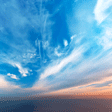

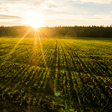
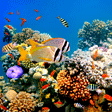
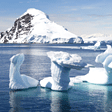


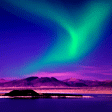

7 Comments
Hi Chabala! Thanks for describing Kariba lake for us!
I could imagine how beautiful and vibrant the lake is by reading your article:)
And I'm also really great to hear that the lake provides various species with their habitats, which helps the whole ecosystem more sustainable and diverse!
Just one concern is that you mentioned that people are planning to encourage tourism around the lake..I'm bit worried if it hurts the ecosystem in that area
Thanks again for interesting report!
Posted 21-03-2017 23:24
Such a lovely lake this must be!
Thanks for sharing this piece of information
Posted 21-03-2017 01:46
I didn't know about this Lake and I'm happy to read this. Action mist be taken to reserve and protect the species and ecosystem.
Posted 21-03-2017 00:41
Haven't heard about that until now. Thank you for sharing it with us!
Posted 20-03-2017 23:15
Chabala, thank you for the report. I am amazed by the size and how vibrant the lake is. Also the lake with some islands, I only heard few of them before. I hope Zambia and Zimbabwe succeed on developing tourism there without harming any ecosystem. I have some question. Since the lake is man made, wasn??t there any environmental problem while making the lake? If there wasn??t, what are the general problems when it comes to making lakes? You could talk about these issus on your next report.
Posted 19-03-2017 11:03
Thank you Arushi.
Posted 18-03-2017 05:56
Thanks for introducing 'Lake Kariba' to us. Honestly, I hadn't known about it. Glad that I am now aware of Lake Kariba- the world's largest man-made lake and reservoir by volume. I googled to know more about it.
Several ecological difficulties and the enormous mass of water having caused induced seismicity, yet it remains a special place of incredible beauty that is a nature lover's dream.
Posted 17-03-2017 23:24